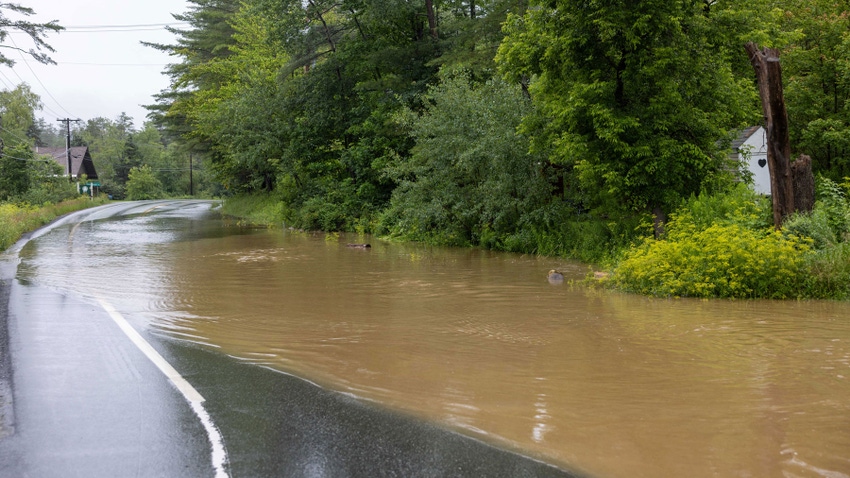
What was a hot but quiet start to the weekend has turned into a major disaster in parts of New York’s Hudson Valley, Vermont and other areas of the region.
Even in parts of Pennsylvania, there has been serious flooding reported — all caused by a series of slow-moving storms that passed through Sunday and Monday.
There is no word yet on how much farm and crop damage has been sustained. Judging by the pictures and videos on social media, overall damage could equal or even exceed damage done by past storms, including Tropical Storm Irene in 2011.
First, stay safe. Follow instructions by your emergency responders, so you do not get hurt. Do not try to assess damage now; wait until the storms pass and the floodwaters recede.
Once it is safe to do so, and if your crop is insured by crop insurance, follow these steps outlined on the Risk Management Agency website:
• Contact your crop insurance agent and follow up in writing. Your crop insurance company will arrange for a loss adjuster to inspect your crop.
Contact your agent within 72 hours after discovery of damage. The loss adjuster will determine whether your yield or revenue falls below the guarantee stated in your policy.
If you are still within the window of opportunity to replant your crop, switch to another crop, or if you want to destroy the crop for any reason (such as planting a cover crop), contact your crop insurance agent and let him or her know your intentions immediately. Your crop insurance company must have an opportunity to inspect the crop and release the acres. Destroying your crop before the company releases the acres could result in your claim being denied.
You must continue to care for the crop until harvest or until your company appraises the crop and releases the acreage.
While you wait for the adjuster, remember these rules:
Do not destroy any of your crop.
Do not disk.
Do not plow.
Do not replant.
Do nothing to destroy your crop until you have permission from a claims adjuster or an insurance company representative.
You should have your Farm Service Agency documents ready to show the number of acres and locations of your insured crops.
The adjuster should have copies of your crop insurance policy documents and your Actual Production History (APH). Adjusters may take pictures of your fields. They may check with your neighbors on the condition of their crops, and they may check with the local elevator operator for average yields in the area.
Here are the latest updates:
• FEMA has announced that federal disaster assistance has been made available to Vermont to supplement state and local response efforts. FEMA is authorized to identify, mobilize and provide, at its discretion, equipment and resources necessary to alleviate the impacts of the emergency. Emergency protective measures, limited to direct federal assistance under the public assistance program, will be provided at 75% federal funding. What this will mean for farmers is, as of yet, unknown.
• Some farms have been picking crops ahead of more expected flooding. According to an article in the online Vt. Digger, River Berry Farm in Fairfax, which sits along the Lamoille River, was panic-chopping lettuce on Monday and that the farm had already lost plantings of lettuce, zucchini, summer squash and other vegetables. Scott Waterman, spokesperson for the agency of ag, says other farms affected by flooding have also started harvesting crops, some prematurely, to get ahead of expected flooding.
• Steve Ammerman, New York Farm Bureau, on storms affecting New York farms: “I reached out to our field advisers who work across the state. Luckily, they have not heard of any significant problems or damage when it comes to farm fields. There is some standing water in some fields, but [it] will hopefully drain quickly. Nothing that was overly concerning from what they have heard. Some issues may be road damage and closures that will make things challenging for everyone.”
Read more about:
DisasterAbout the Author(s)
You May Also Like






